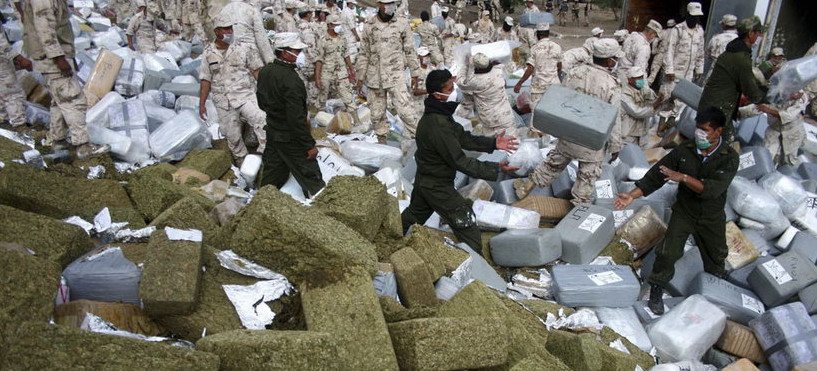Cultural Differences in Modern Mexico
The thought of Los Narcos (or the drug cartels) will undoubtedly conjure up images of guns, bloodshed and fear. From the bustling streets of Mexico City to the rural poppy fields of Michoacán, violence is rife between the state and organised crime.
However, the story is not quite so simple. The story is not simply the Mexican nation united against some alien criminal enterprise, nor does the conflict purely surround violence, involving street gunfights and raids. On the contrary, the conflict has become increasingly cultural, with the state fighting a new social identity, El Narco. This identity has sunk its cultural roots deep into Mexican society and therefore many younger-generation Mexicans have shown a desire to involve themselves with these cartels. This cultural shift has occurred due to the fact that they see the lifestyle of a Narcotraficante (drug trafficker) as an opportunity to break away from the social and economic depravity of a society which has largely been neglected by the state, but it is also because the life as a Narco, for many youths, has come to symbolise a life of action, of riches and of sex.
The cartels on other hand, have come to symbolise modernity and progress in many rural areas by becoming the main benefactors of community projects and infrastructure.
It is important to note that the lack of government investment in the daily lives of Mexicans has meant that the youth have lost faith in the state, especially when it comes to the possibility of social mobility. The cartels on other hand, have come to symbolise modernity and progress in many rural areas by becoming the main benefactors of community projects and infrastructure. The government has insisted that they won’t work with any community that has allied itself with the drug cartels (which only serves to further alienate themselves). But the lack of any existing basic services in these areas would suggest that they had no intention of engaging with the communities in the first place. Likewise, many slums have been neglected and according to the residents, they have been left to rot, perhaps emphasised by the fact that only 45% of youths in Ciudad Juarez (a city renowned for drug-related violence) are in education or have a job. As a result, many of these regions view themselves as cerrados, or removed from the national project and so, have naturally been persuaded to attach themselves to the cultural influence of these gangs that have come to symbolise material progress. Therefore, according to many youths, the cartels appear to embody a Hispanic equivalent of Robin Hood by fighting those traditionally in power and helping the poor.
In addition to undermining the authority of the state, the cartels have created a whole new social identity; the Narco. A life working as a narcotraficante (drug trafficker), as mentioned earlier, is immensely prestigious and certainly commands far more respect than that of the average worker, who could slave away for a full day’s work and still barely earn enough to live. As an example, Shaylih Muehlmann, author of ‘When I Wear My Alligator Boots’, accounts the story of Alvés, a former Narco, who claimed soon after quitting that he would never be able to get a girlfriend again, presumably due to the loss of sex appeal which the identity of a Narco tends to give. He felt emasculated by this change in identity and he attributed all his shortcomings in life to this. Alvés therefore, as the title suggests, came to regard his alligator boots above all other items of clothing because these boots came to symbolise his previous identity, which was so empowering for him.
It suggests that whilst a majority of the population don’t act through fear, perhaps some choose not to act, as the Narcos have come to provide an alternative cultural identity, which has the ability to empower and to grant social mobility to those that have no other option.
The drug cartels have created their own genre of music, their own films, language and even a sect of Catholicism. All of this has helped to redefine the Narcos in the Mexican community, away from the state narrative, which depicts them as simply murderers, and towards the cartel narrative which helps to show the Narco as someone who has come from the local community, broken out of poverty and has become filthy rich. A changed and empowered man. For example, the film ‘El Bazukazo’ refers to the Narcos as hombres de acción (men of action) who always have each other’s backs.
Perhaps the most telling sign however of this cultural challenge is in the final scene of the film ‘Narcocultura’, in which the corpse of a mother’s son has been cut into 16 pieces and scattered in the street by cartel members. She screams at the camera ‘nadie grita’ (nobody screamed [did anything]), which perhaps emphasises that whilst violence is a very cruel reality of Mexican society, it is part of a much more profound cultural conflict. It suggests that whilst a majority of the population don’t act through fear, perhaps some choose not to act. The Narcos have come to provide an alternative cultural identity, which has the ability to empower and to grant social mobility to those that have no other option.

Comments